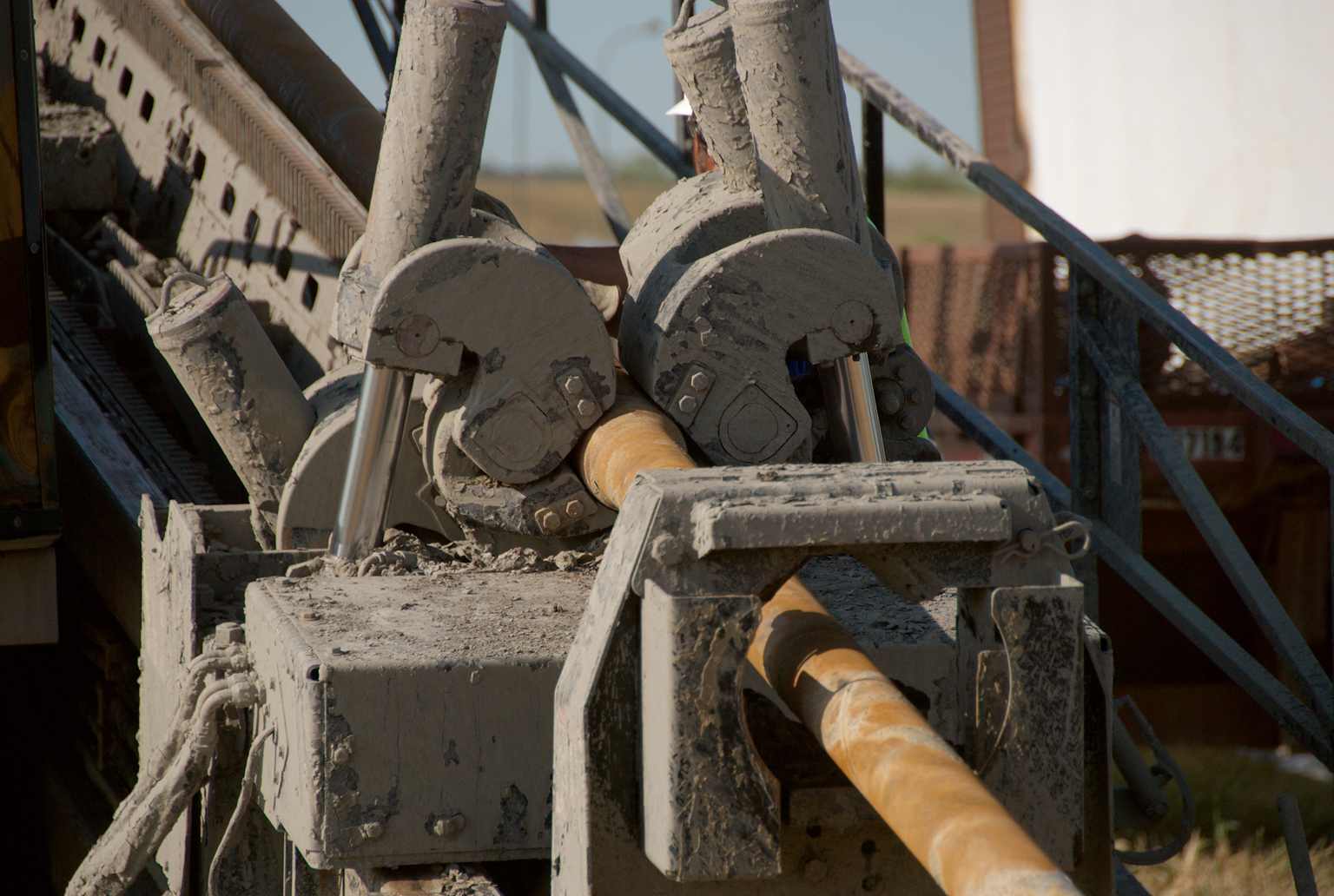June 2011 Vol. 238 No. 6
Features
HDD Instrumental In Bison Project

When TransCanada Corp. opened its new 305-mile, 30-inch Bison Pipeline between the Rockies and the Midwest earlier this year, horizontal directional drilling (HDD) played an important role in its completion.
Environmental concerns, and not economics, drove the use of HDD technology for river, stream and road crossings in building the Bison Pipeline. The dramatic advantage is the reduction of surface disturbance, that owner/operator TransCanada emphasizes.
Examples are abundant: Interstate Highway 90, a 500-foot bore that consumed eight working days and another four days for pre- and post-drilling, or mobilization work, according to Houston-based David Dodson, a TransCanada spokesperson.
Another example is the Powder River, which was a 4,000-foot bore that took 18 working days to complete, along with seven days for the pre- and post-drilling work.
“If you have a stream crossing, to the extent that you can horizontally drill under a stream you can pretty much avoid any environmental impact,” said Dodson, noting that the company does not talk about the added subcontractor costs involved, although average costs run in the range of $600-700/foot. Similar crossings were made at the Middle Missouri and Heart rivers.
Two TransCanada subcontractors handled the HDD technology – Michels Pipeline Construction that does its own directional drilling, and Price Gregory International, which in turn subcontracted that work out to King Contracting Inc.
“When talking about streams, there is no sediment disturbance, nor disturbance of the stream flows, habitat or mating seasons,” said Dodson, who noted that it creates the potential, at least, for shorter completion times.
On the negative side, there is the risk of a so-called “frac-out” any time these holes are drilled, but Dodson said that none of these problems were encountered with Bison’s construction.
“We did not have any technical problems with the HDDs,” he said, noting that frac-outs can occur when the borehole encounters any unexpected fracture that leads to the surface, causing drilling mud to reach the surface through the fractures.
“When frac-outs occur on land, the mud is contained and disposed of according to regulations,” he said. “If it occurs in stream, the drill stem is removed and the frac is sealed. Again, I repeat, this did not occur on Bison.”
“So there are risks, and it is difficult to gauge the costs until the work is actually done, but for TransCanada on the Bison project HDD worked the way it’s supposed to. Flawlessly.”





Comments